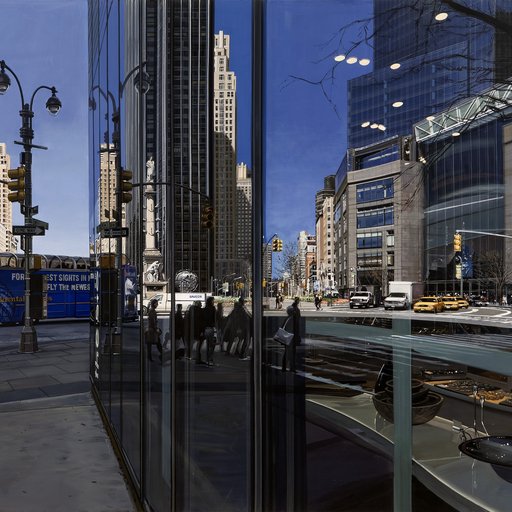Arkansas Arts Center, Little Rock, AR
Art Institute of Chicago, Chicago, IL
Baltimore Museum of Art, Baltimore, MD
Birmingham Museum of Art, Birmingham, AL
Butler Institute of American Art, Youngstown, OH
Carnegie Institute, Pittsburgh, PA
Cedar Rapids Museum of Art, Cedar Rapids, IA
Cincinnati Art Museum, Cincinnati, OH
Cleveland Museum of Art, Cleveland, OH
Columbus Museum of Art, Columbus, OH
Davenport Art Gallery, Davenport, IA
Denver Art Museum, Denver, CO
Des Moines Art Center, Des Moines, IA
Detroit Institute of Arts, Detroit, MI
Solomon R. Guggenheim Museum of Art, New York, NY
Hamburg Museum, Hamburg, Germany
High Museum of Art, Atlanta, GA
Hood Museum of Art, Dartmouth College, Hanover, NH
Hopkins Center Art Gallery, Dartmouth College, Hanover, NH
Indianapolis Museum of Art, Indianapolis, IN
Long Beach Museum of Art, Long Beach, CA
Joe and Emily Lowe Art Gallery, Syracuse University, Syracuse, NY
Madison Art Center, Madison, WI
Metropolitan Museum of Art, New York, NY
Milwaukee Art Museum, Milwaukee, WI
Museum of Art, University of Oklahoma, Norman, OK
Museum of the City of New York, New York, NY
Museum of Fine Arts, Springfield, MA
Museum of Modern Art, New York, NY
National Academy of Design, New York, NY
National Museum of American Art, Smithsonian Institute, Washington, DC
Nelson-Atkins Museum of Art, Kansas City, MO
New Britain Museum of American Art, New Britain, CT
New Orleans Museum of Art, New Orleans, LA
Orlando Museum of Art, New Orlando, FL
Philadelphia Museum of Art, Philadelphia, PA
Princeton University Art Museum, Princeton, NJ
Rose Art Museum, Brandeis University, Waltham, MA
Rutgers University, Camden, NJ
Sentra Museum, Berardo Collection, Lisbon, Portugal
St. Louis Art Museum, St. Louis, MO
Smith College Museum of Art, Northampton, MA
Springfield Art Museum, Springfield, MO
Tate Gallery, London, England
Toledo Museum of Art, Toledo, OH
University of Iowa Museum of Art, Iowa City, IA
University of Kentucky Art Museum, Lexington, KY
University of Michigan Museum of Art, Ann Arbor, MI
University of Virginia Art Museum, Charlottesville, VA
Utah Museum of Fine Arts, University of Utah, Salt Lake City, UT
Utrecht Museum, Utrecht, Netherlands
Virginia Museum of Fine Arts, Richmond, VA
Whitney Museum of American Art, New York, NY
Wichita Art Museum, Wichita, KS
Yale University Art Gallery, New Haven, CT










